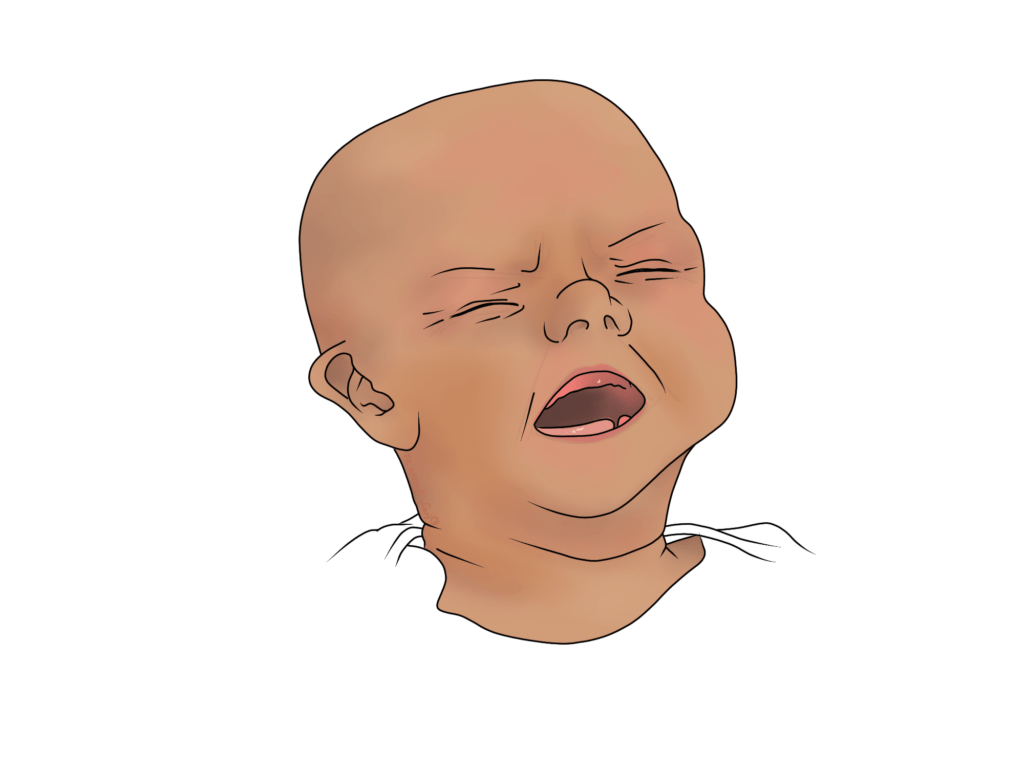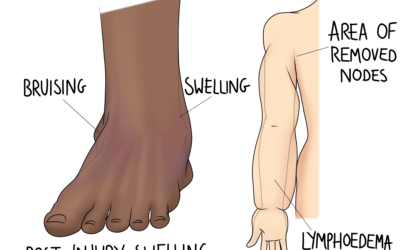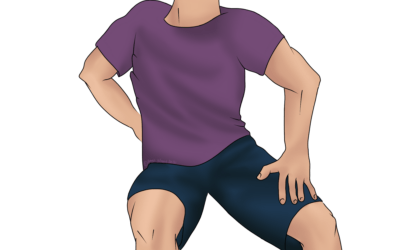Rather than a diagnosis, colic is a symptom, or a collection of symptoms. It is characterised by inconsolable crying in young babies. Episodes may last hours at a time, which can be very distressing for the caregivers too.
 Basics of Colic
Basics of Colic
Colic is defined by the NHS as:
repeated episodes of excessive and inconsolable crying in an infant that otherwise appears to be healthy and thriving
Episodes are generally considered to last around three hours a day, at least three days a week. Previously the definition required this to occur over a three week period, but more recently it has been modified. Three hours a day for three days over a week is sufficient to be labelled as colic. Typically, crying and fussing will be worse in the evening than the rest of the day.
If symptoms last for more than four months, other causes need to be considered. Likewise, if the onset was very sudden, there are a number of potential causes that should be ruled out. If your baby’s crying is associated with projectile vomiting, green vomit, abdominal distension, or blood in the stool, you should seek medical advice immediately. There are also infections that should be considered- if you are unsure about your baby’s symptoms, call your GP, 111, or 999 if you believe it is an emergency.
Management Strategies
We recognise that evidence for cranial osteopathy and colic is generally lacking, but studies have shown a benefit. Some parents, including Pippa Middleton, find treatment improves their child’s symptoms.
Gentle treatment to baby’s tummy can also help. When colic symptoms are associated with reflux or indigestion, the diaphragm is often involved. The diaphragm is a parachute-like muscle that sits under the lungs, connecting to the ribs and forming a divide between the chest and abdomen. It has a space in its centre for the food pipe (oesophagus) to pass through, so you can imagine that when the muscle is tense, digestion is affected. We know that in adults, the diaphragm forms the “anti-reflux barrier”, helping to support the sphincter at the top of the stomach and preventing the return of food back up towards the mouth.
For babies, their muscle tone may be reduced in comparison to an adult’s. They have a liquid diet and spend lots of lying down: two factors that can encourage the back-flow of stomach contents and predispose the child to reflux. Reflux can be surprisingly difficult to diagnose if stomach contents does not travel all the way back up the food pipe. This is known as “silent reflux” and can cause just as much discomfort and may be a factor in your baby’s colic.
In treatment, your osteopath may want to work on the diaphragm muscle, and they may also advise that you keep baby more upright after a feed. However, it is not recommended that you raise the head-end of their sleeping surface, as this can cause them to slip down or hold their neck in an unsafe position. Your health visitor or GP can offer more support with altering feeding.
What is Cranial Osteopathy?
Cranial osteopathy is a gentle therapy suitable for young babies and adults alike. The osteopath generally works with the body rather than against it when using these techniques. There is no joint-clicking involved, just gentle movement and pressure to baby’s head. When babies are born, the bones in their skulls are not fused. This allows easier movement through the birth canal and allows freer brain growth when their growth is most rapid. As colic is a collection of symptoms, there may be a number of causes for a baby’s discomfort. For added complexity, babies cannot effectively communicate a specific problem. Like we experience growing pains in our limbs as older children, perhaps babies suffer headaches as their skulls develop.
Effects of Colic on Caregivers
The NHS recommends holding or rocking the baby through a crying episode where possible. This may help for some babies, but may also take a toll on the caregiver’s shoulders, arms, upper back and neck. Although these aches and pains are likely to be transient, they can make a difficult situation worse, so don’t feel that you have to put up with them. Osteopaths can help with general aches and pains. Let us know if you need to bring your baby with you to your appointment and we can make accommodations where necessary.
What We Know About Colic
- Colic is a collection of symptoms that include extended, inconsolable crying
- It typically affects babies under 6 months of age
- Causes may be digestive, or there may be another cause of pain or discomfort
- The emotional and physical stressors of a colicky baby usually have an impact on the caregiver(s) too
- Your baby’s symptoms may respond to a range of treatments or lifestyle changes
To make an appointment for your baby or yourself, click here.
References
- Cks.nice.org.uk. 2022. References | Colic – infantile | CKS | NICE. [online] Available at: <https://cks.nice.org.uk/topics/colic-infantile/references/>.
- Cks.nice.org.uk. 2022. Differential diagnosis | Diagnosis | Colic – infantile | CKS | NICE. [online] Available at: <https://cks.nice.org.uk/topics/colic-infantile/diagnosis/differential-diagnosis/>.
- Hayden, C. and Mullinger, B., 2006. A preliminary assessment of the impact of cranial osteopathy for the relief of infantile colic. Complementary Therapies in Clinical Practice, 12(2), pp.83-90.
- Harper’s BAZAAR. 2022. Pippa Middleton Opens Up About Trying Alternative Therapies for Her Son. [online] Available at: <https://www.harpersbazaar.com/celebrity/latest/a29614180/pippa-middleton-son-arthur-osteopath-therarpy/>.
- Cks.nice.org.uk. 2022. Scenario: Management | Management | Colic – infantile | CKS | NICE. [online] Available at: <https://cks.nice.org.uk/topics/colic-infantile/management/management/>.



0 Comments